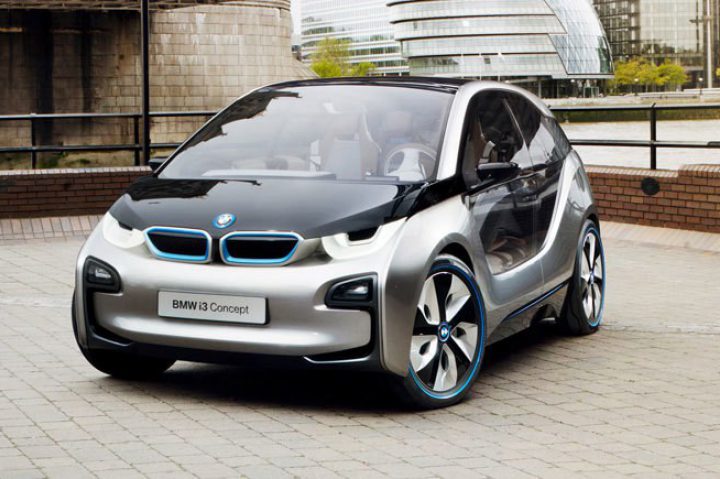UK: Energy records keep on tumbling
Renewable energy passes milestones as Britain's power system transformation continues
By George Smeeton
Share
Last updated:
Last month (9th April, to be specific), for a brief moment, and for the first time ever, solar power was providing over a quarter of our electricity, and this contributed to renewables providing nearly half of our electricity needs.
This solar effect caused the afternoon minimum demanded from National Grid to be be lower than the night time minimum demand - another first (electrons generated by rooftop solar never make it onto the main power grid - they are used by the local grid operator. Essentially the excess electrons you generate on your rooftop keep your neighbours appliances running).
And finally, Britain has just had its first ever full day without coal being in the electricity mix (21st April), and that’s on top of wind power providing more electricity in the first three months of the year than ever before.
So records have tumbled fast recently, and more are likely to come soon. Indeed, National Grid has already forecast that minimum demand would fall to a record low sometime this summer.

Guessing which records will fall next isn't particularly hard to predict. Take solar: Install more panels, and you’ll make more electricity from them when it’s sunny. Clearly more panels means there’s a good chance that solar will get to the one-third-of-all-electricity milestone soon (next spring?).
Whilst the rate of panel deployment has started falling - 650 installations a week for the first three months of 2017, down from 2,700 previously - that figure still means every week there are 650 more solar installations, with a cumulative theoretical GW capacity of more than the week before.
Take this further and on a good day renewables will provide over half of electricity generated at some point, meaning that low-carbon generation (i.e. renewables and nuclear) could well be over three quarters of generation at some point soon - maybe even this summer.
Short-term consequences
Coal will be bumped off the system again - and the record will become not about a day here or there, it will be how long in hours will we have not needed coal at all. It’s quite easy to imagine a weekend (when demand is lower) without coal. Add on a windy Monday morning, and 50+ hours is easily feasible.

This could have some strange short-term consequences. Analysis by Platts found that March’s average wholesale price was reduced by about £2 compared to the previous year. This gives anyone looking to build any type of generational capacity less incentive to do so - and in the medium-long term, Britain has to get more stuff built somehow.
So, the government has intervened - most infamously by giving an index-linked strike price of £92.50/MWh to EDF for electricity produced at Hinkley Point C (for comparison, as I write this, the wholesale price is hovering around the £40/MWh mark). The paradox is clear - the more renewables built, the less incentive there is to build more.
Even more bizarrely, National Grid may actually ask wind farm operators to turn off their turbines when it’s sunny - a decision that seems bonkers to some, but makes perfect sense when your overarching aim is to balance supply with demand.
Medium-term challenges
But looking further ahead starts to become difficult. That’s because the changes in the UK's energy system obviously aren’t confined to just solar panels and wind turbines. Indeed, there are two large and semi-complementary technologies poised to become part of everyday life very soon: energy storage, and electric vehicles.
Energy storage will have the obvious job of mopping up any unused electrons that renewables generate, so no more asking wind farms to stop. And the more storage you have, the more the wholesale price is evened out.
Where that storage is located though is unknown right now. There are three main locations: somewhere on the grid, somewhere in your home or business, and in your electric vehicle (EV). There are some 2.8GW of large scale battery based energy storage projects currently in the UK’s planning system (Solar Media figures).
There are some 1500 home battery installations currently, and EV sales are on the rise - some 4% of new car sales in March were ‘alternatively fuelled’ (another record. Someone get the man from Guinness on the phone. The book bit, not the booze bit, obviously). And each EV carries its own energy storage device, by definition.
Which companies own that energy storage is where the interesting battleground is. And the names are not necessarily what you think they would be.
From car makers to power companies
For instance, could BMW become the market leader in energy storage? Yes, BMW - the German car manufacturer. Obviously it makes EVs already (the i3 is the fourth most popular selling electric vehicle in the UK), but it has just agreed a deal to provide Swedish energy giant Vattenfall to provide batteries for use on their wind farms, including a 22MW system at the Pen Y Cymoedd wind farm in Wales, so already two out of three (EV and grid) for BMW.
And BMW announced last year that it was entering the home battery market. There is no date set yet for when you will be able to buy a BMW battery for your home - something that is markedly different from rival Tesla. The first Tesla home energy storage system in the UK - the Powerwall - was installed about a year ago. And obviously Tesla cars are an increasingly common sight on the UK’s roads. Two out of three for Tesla too.

It’s not just car companies though. Big Six firm E.On recently announced that it was to sell complete residential solar and storage systems. And E.On is not just a supplier of electricity - it also generates electricity via their 21 windfarms in the UK. Could they link up their electricity generation and home batteries? And could it further tie this into the charging of electric vehicles? In Denmark, it already owns and operates 4,500 EV charging stations. Why not here?
These are just examples, and there are, of course, many other companies involved in the UK energy storage market. Clearly it is still early days. But you can see the positioning going on.
No single company is yet involved in all three energy storage locations in the UK. But it is that ‘yet’ which could propel a company towards the record they really want - and that’s the one for largest profits. And if that helps with the record the greenies really want - no fossil fuels burnt, ever - well, that can’t be a bad thing, can it?
Share